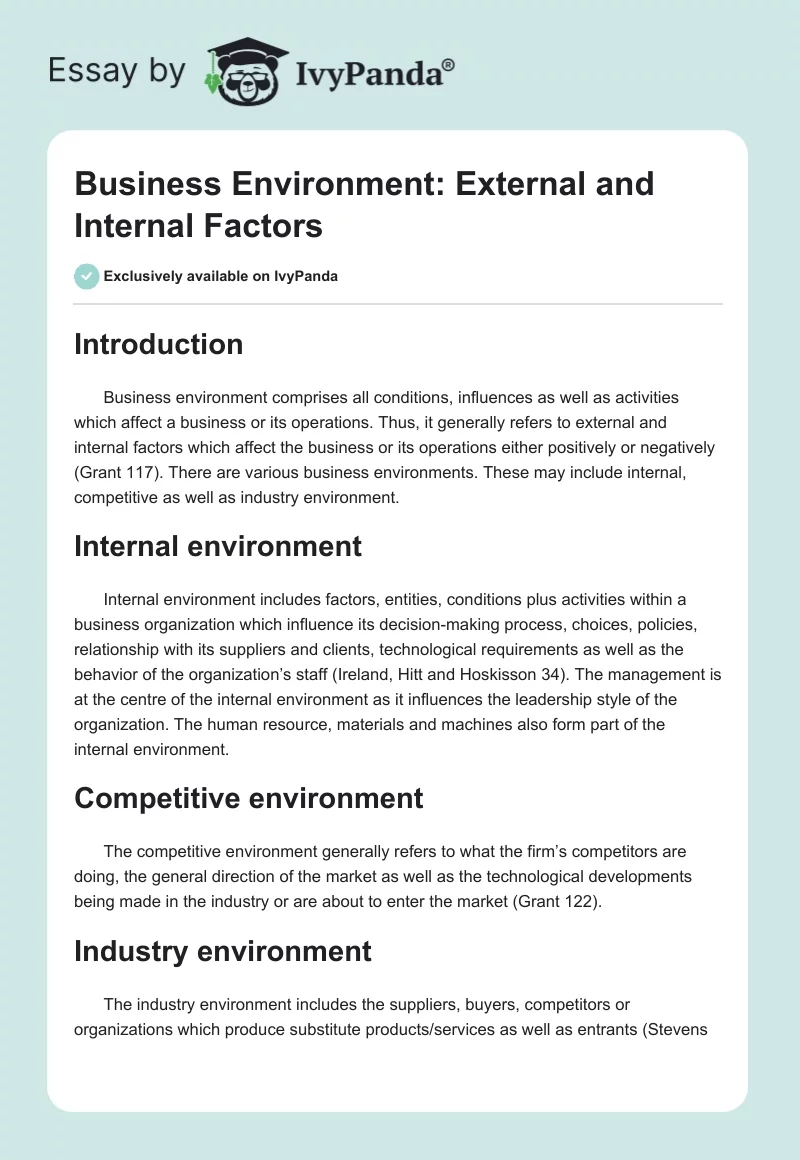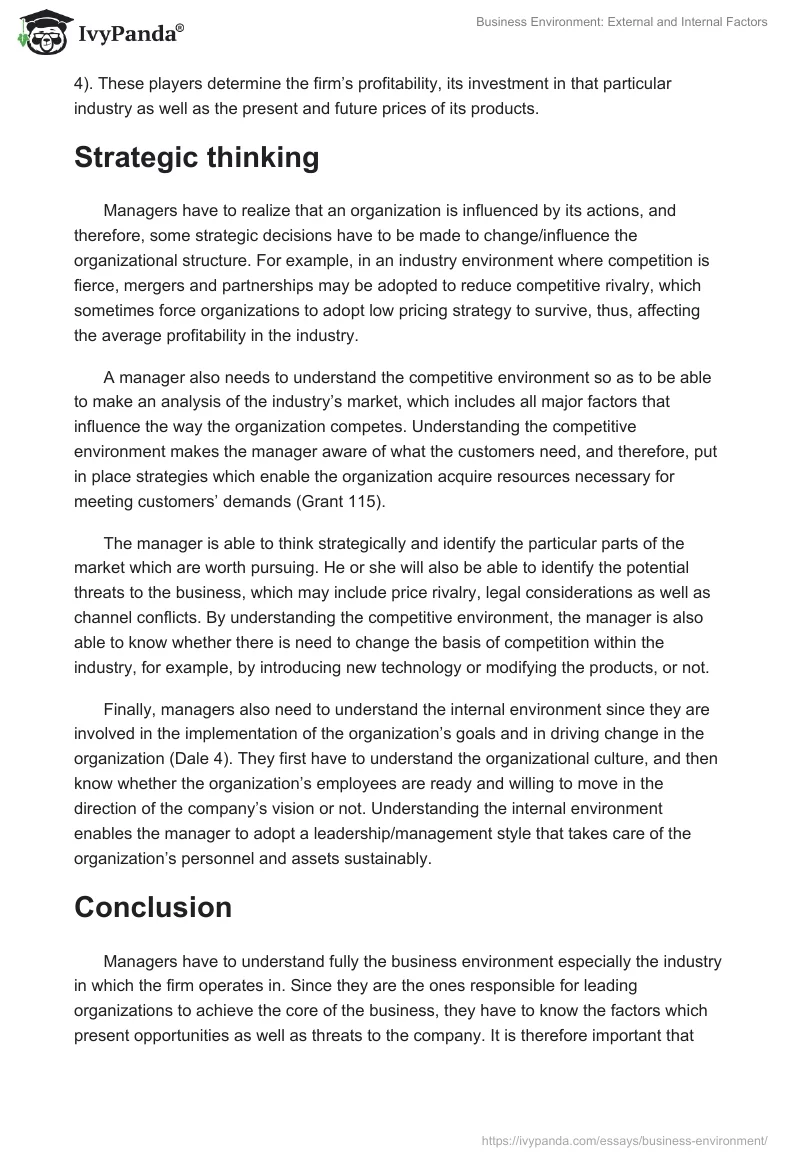Introduction
Business environment comprises all conditions, influences as well as activities which affect a business or its operations. Thus, it generally refers to external and internal factors which affect the business or its operations either positively or negatively (Grant 117). There are various business environments. These may include internal, competitive as well as industry environment.
Internal environment
Internal environment includes factors, entities, conditions plus activities within a business organization which influence its decision-making process, choices, policies, relationship with its suppliers and clients, technological requirements as well as the behavior of the organization’s staff (Ireland, Hitt and Hoskisson 34). The management is at the centre of the internal environment as it influences the leadership style of the organization. The human resource, materials and machines also form part of the internal environment.
Competitive environment
The competitive environment generally refers to what the firm’s competitors are doing, the general direction of the market as well as the technological developments being made in the industry or are about to enter the market (Grant 122).
Industry environment
The industry environment includes the suppliers, buyers, competitors or organizations which produce substitute products/services as well as entrants (Stevens 4). These players determine the firm’s profitability, its investment in that particular industry as well as the present and future prices of its products.
Strategic thinking
Managers have to realize that an organization is influenced by its actions, and therefore, some strategic decisions have to be made to change/influence the organizational structure. For example, in an industry environment where competition is fierce, mergers and partnerships may be adopted to reduce competitive rivalry, which sometimes force organizations to adopt low pricing strategy to survive, thus, affecting the average profitability in the industry.
A manager also needs to understand the competitive environment so as to be able to make an analysis of the industry’s market, which includes all major factors that influence the way the organization competes. Understanding the competitive environment makes the manager aware of what the customers need, and therefore, put in place strategies which enable the organization acquire resources necessary for meeting customers’ demands (Grant 115).
The manager is able to think strategically and identify the particular parts of the market which are worth pursuing. He or she will also be able to identify the potential threats to the business, which may include price rivalry, legal considerations as well as channel conflicts. By understanding the competitive environment, the manager is also able to know whether there is need to change the basis of competition within the industry, for example, by introducing new technology or modifying the products, or not.
Finally, managers also need to understand the internal environment since they are involved in the implementation of the organization’s goals and in driving change in the organization (Dale 4). They first have to understand the organizational culture, and then know whether the organization’s employees are ready and willing to move in the direction of the company’s vision or not. Understanding the internal environment enables the manager to adopt a leadership/management style that takes care of the organization’s personnel and assets sustainably.
Conclusion
Managers have to understand fully the business environment especially the industry in which the firm operates in. Since they are the ones responsible for leading organizations to achieve the core of the business, they have to know the factors which present opportunities as well as threats to the company. It is therefore important that they first understand the core competencies of their organizations in order to compete effectively.
Works Cited
Dale, Hendricks. “The elements of successful organizational change.” Industrial Management 31.2 (1989): 4-5. Print.
Grant, Robert. “The resource-based theory of competitive advantage: Implications for strategy formulation.” California Management Review 33.3 (1991): 114-135. Print.
Ireland, Duane, Hitt Michael and Hoskisson Robert. Understanding Business Strategy, 2 ed. Boston, Massachusetts: South-Western College, 2011. Print.
Stevens, Craig. Element 4 of the Drivers of Change model: The Internal Environment. Westbrook Stevens, LLC. 2009. Web.


